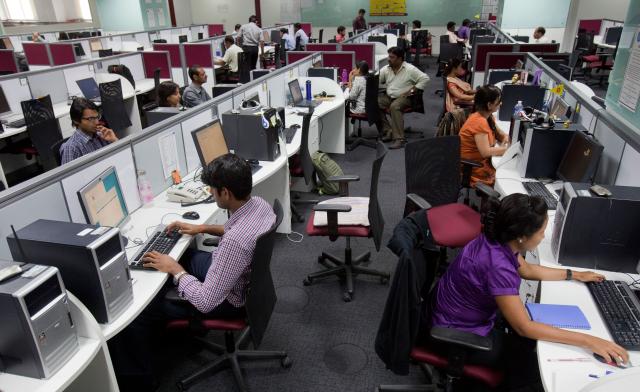Bottom Line: The uptake in office space absorption is not translating into home sales; thus confusing the analysts.
 To say that office space absorption is the first indicator of housing revival would be no big statement in the real estate market. It is a known fact that the job creation leading to demand in office space leads to demand of houses. Why then the uptake in office space, of late, is not translating into residential sales? Has the trend changed in recent times?
To say that office space absorption is the first indicator of housing revival would be no big statement in the real estate market. It is a known fact that the job creation leading to demand in office space leads to demand of houses. Why then the uptake in office space, of late, is not translating into residential sales? Has the trend changed in recent times?
A look at the office absorption suggests that housing demand should also pick up simultaneously. On the back of growth of sectors such as IT and ITeS, banking and financial services, pharmaceuticals and, to a certain extent, the growth of e-commerce, the absorption of office space has increased to 2006-2008 levels. It is expected that 2016 will end up with 42-43 million square feet absorption pan India.
Office & home realities
- Job creation leads to office space that fuels housing demand
- Office uptake not translating into residential demand
- Demand & supply mismatch one major reason of housing slump
A JLL report also confirms that after witnessing sub-30 million square feet of net absorption for three years in a row (2012-14), 2015 saw absorption rise significantly to above 35 million square feet. An aggressive expansion strategy adopted by many companies, particularly after going through a slow phase in the immediate preceding years, along with rising prominence of newer players in the e-commerce, healthcare and technology space led to the recent jump in occupancy.
Yogesh Mehra, CEO & Co-founder, YOLO Homes finds a method into it when he says that the problem is that the current residential supply is not aligned with the realities of demand. Home-buyers in and around workplace hubs want cost-effective residential solutions which also contribute to their lifestyle quotient in ways other than mere proximity to the office. Because homes in the CBD areas tend to be very expensive, such offerings currently face the slowdown which all costly luxury offerings currently face in India.
“What is needed to tap the demand for homes around workplace hubs is an entirely new kind of offering, namely well-appointed and fully-facilitated homes which do not break the bank. Size is of far less consequence than the convenience and comfort a home delivers in such a location. Too-large homes also automatically price themselves out of the market,” says Mehra.
Kishor Pate, CMD, Amit Enterprises Housing finds another reason when he says that there is usually a lag between office space creation and residential uptake in a catchment. Also, in the case of Grade A office supply, the corresponding residential supply tends to be high-end or premium, for which appetite is currently low. In the case of IT commercials spaces, the demand for residential properties in the surrounding or connected areas is still healthy.
“Such properties need to be priced right and the projects need to be in advanced stages of construction so as to induce buyer confidence. For example in areas that are in close proximity to the IT and corporate hubs, we are seeing high demand for homes which are close to delivery date – around six months till possession,” says Pate.
Anuj Puri, Chairman & Country Head, JLL India maintains that office space absorption was pretty low in the last few years post 2011, because India was gearing up for the General Elections. The resulting uncertainty meant companies put their expansion plans on hold. The demand for office space we are seeing is nothing but pilferage of demand from the previous years.
“Because developers realized that there is less demand for office, they shifted focus to residential, resulting in over-supply. Since they had purchased land at high prices during the bull years, they did not choose to launch affordable or mid-scale projects and instead went for premium and luxury, resulting is product-demand mismatch,” says Puri.
There is no denying that office space is still very much a prime driver. The office sector will continue to be the bellwether for the overall economic outlook as well as viability of residential and retail projects, and will always result in residential and retail developments.
It is not only new office space which drives demand for homes. Existing commercial areas generate a steady demand which increases as the office projects become populated and the usual process of churn realigns the tenants. New office projects in upcoming areas take a longer time to attract such demand as the surrounding infrastructure and connectivity also need to catch up.
In a nutshell, office space still very much drives demand for residential properties, but developers need to get their deliverables right. Job creation will always drive up demand for homes in an office or manufacturing area, but the bulk of the demand comes from young singles or working couples who want the convenience of living close to where they work but do not have massive budgets to spend. They are content with smaller homes which nevertheless give them all the comforts.
By: Ravi Sinha





